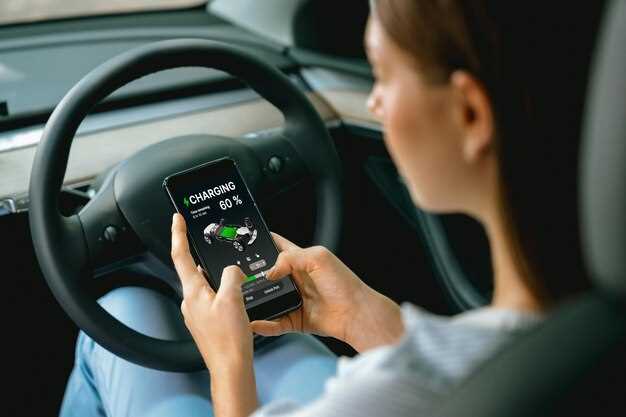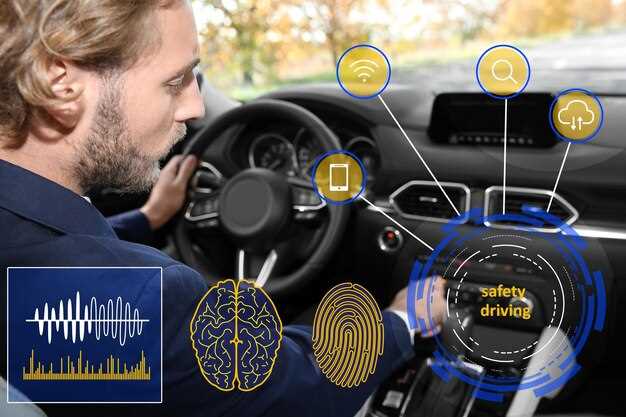
In recent years, the automotive industry has witnessed a rapid evolution of communication systems that promise to revolutionize road safety and traffic efficiency. One of the most significant advancements in this regard is Vehicle-to-Vehicle (V2V) communication technology. This innovative approach facilitates direct communication between vehicles, allowing them to exchange crucial information in real-time, thus enhancing situational awareness on the roads.
V2V technology operates on dedicated short-range communication (DSRC) protocols, enabling vehicles to share data such as speed, direction, and braking status. This constant flow of information not only helps in preventing collisions but also aids in optimizing traffic flow by allowing vehicles to make informed decisions based on the behavior of nearby vehicles. As more automobiles become equipped with these advanced systems, the potential for a significant reduction in accidents and traffic congestion becomes increasingly plausible.
Understanding the functionality of V2V communication is vital for both consumers and industry stakeholders. By demystifying how this technology works, we can better appreciate its role in the future of transportation. The integration of V2V into existing infrastructure represents a significant leap forward in our quest for smarter, safer roadways, paving the way for a more connected automotive ecosystem.
How V2V Technology Enhances Road Safety
Vehicle-to-Vehicle (V2V) technology plays a crucial role in improving road safety by enabling direct communication between vehicles. This innovative approach allows vehicles to share vital information regarding their speed, direction, and location, which significantly enhances situational awareness on the roads.
The functionality of V2V technology revolves around its ability to transmit real-time data, leading to several key safety benefits:
- Accident Prevention: By communicating critical data, vehicles can alert each other about potential hazards, such as sudden braking or the presence of obstacles. This early warning system enables drivers to react promptly, potentially preventing collisions.
- Improved Traffic Management: V2V technology assists in coordinating traffic flow, reducing stop-and-go situations. Efficient traffic management reduces the likelihood of accidents caused by sudden changes in vehicle speed.
- Enhanced Awareness of Surroundings: Vehicles equipped with V2V technology can ‘see’ beyond their immediate environment. This helps drivers become aware of vehicles in blind spots or those approaching intersections, significantly reducing the risk of accidents.
- Emergency Response: In the event of an accident, V2V communication allows for rapid notification of emergency services, leading to quicker response times and potentially saving lives.
- Pedestrian Safety: V2V technology can also facilitate communication with pedestrians and cyclists, alerting drivers to their presence and enhancing their safety on the roads.
Moreover, the adoption of V2V technology is complemented by regulatory support and standardization efforts aimed at creating a safer driving environment. As more vehicles become equipped with this technology, the overall safety of road networks will improve, leading to a substantial reduction in traffic-related injuries and fatalities.
In conclusion, V2V technology stands at the forefront of improving road safety, harnessing the power of communication to create a safer driving experience for all road users.
Key Components of Vehicle-to-Vehicle Communication Systems

Vehicle-to-Vehicle (V2V) communication systems are essential for the advancement of transportation technology aimed at enhancing safety and efficiency on the roads. The primary components that enable this functionality include:
1. Onboard Units (OBUs): Each vehicle is equipped with an Onboard Unit that processes information regarding the vehicle’s location, speed, direction, and other essential data. These units are crucial for transmitting and receiving messages from other vehicles in proximity.
2. Dedicated Short-Range Communication (DSRC): This wireless communication technology is utilized within V2V systems to facilitate real-time data exchange between vehicles. Operating in the 5.9 GHz band, DSRC enables low-latency communication, which is vital for timely safety alerts.
3. Global Navigation Satellite Systems (GNSS): Accurate positioning is critical for V2V communication. GNSS is integrated into the system to provide precise location information, allowing vehicles to determine their relative positions and warn each other of potential hazards or navigational issues.
4. Sensors and Perception Modules: Vehicles are equipped with various sensors, such as radar, lidar, and cameras, which enhance situational awareness. These sensors collect data about the vehicle’s environment, contributing to more informed communication between vehicles.
5. Data Processing Algorithms: Advanced algorithms process the information collected from OBUs, sensors, and GNSS to analyze traffic patterns and predict potential accidents. This processing is key to generating relevant alerts and facilitating informed decision-making for drivers.
6. Security Protocols: To ensure the safety and integrity of communication, robust encryption and authentication mechanisms are implemented. Protecting the data exchange prevents malicious interference and maintains the reliability of safety-critical information.
7. Inter-Vehicle Messaging Systems: These systems enable the formulation and transmission of messages, such as alerts about sudden braking or road hazards. Effective messaging ensures that drivers receive timely information necessary for avoiding accidents.
In summary, these key components work together harmoniously to create a robust V2V communication system. By leveraging this technology, the automotive industry can significantly enhance road safety, improve traffic flow, and lay the groundwork for future advancements in autonomous driving.
Real-World Applications of V2V Communication in Traffic Management

Vehicle-to-Vehicle (V2V) communication technology plays a crucial role in modern traffic management systems by enabling real-time data exchange between vehicles. This connectivity facilitates improved safety, efficiency, and traffic flow. One prominent application is collision avoidance systems. These systems utilize V2V data to alert drivers about potential hazards such as sudden stops or obstacles ahead, significantly reducing the likelihood of accidents.
Another vital application is traffic signal optimization. By harnessing V2V communication, traffic signals can adapt in real-time based on the flow of vehicles. This dynamic response helps minimize congestion and enhance travel times, making road networks more efficient. Moreover, V2V technology enables better coordination between vehicles and infrastructure, allowing for synchronized traffic lights that adjust to current traffic conditions.
Emergency response can also benefit from V2V communication. When an emergency vehicle is en route, V2V systems can communicate with surrounding vehicles to create a clear path, reducing response times and improving overall safety during emergencies. Additionally, this technology supports the implementation of connected Adaptive Traffic Control Systems (ATCS), which analyze traffic data and respond accordingly to optimize signal timings and improve overall traffic management.
Furthermore, V2V communication aids in managing fleet vehicles, such as buses and delivery trucks. By sharing real-time location and status information, companies can coordinate routes, reduce delays, and enhance service delivery. This proactive approach not only maximizes efficiency but also leads to lower emissions and improved environmental outcomes.
In summary, the integration of V2V communication technology within traffic management systems offers innovative solutions to enhance safety, optimize traffic flow, and improve the overall efficiency of transportation networks. As these technologies continue to evolve, their real-world applications will likely expand, fostering smarter cities and safer roads.




